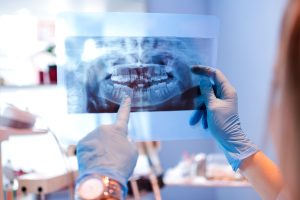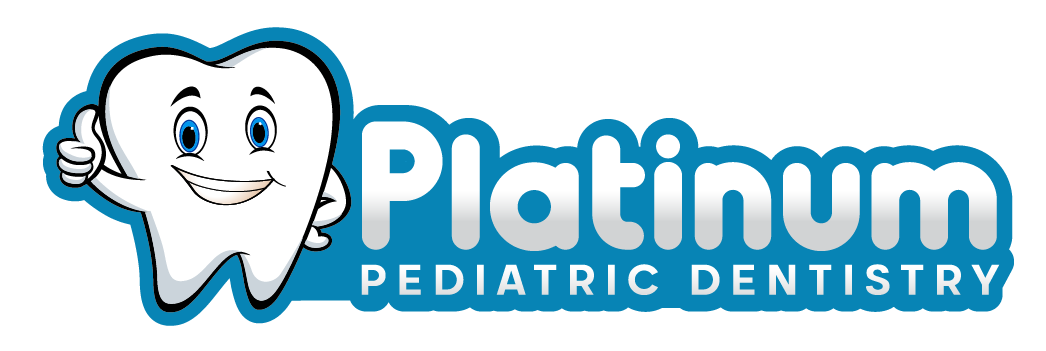 by Dr. Dan Bamshad, DDS – 12/17/24
by Dr. Dan Bamshad, DDS – 12/17/24
Why Radiographs Are Important to Take at Checkup Visits
Radiographs, or dental X-rays, are an integral part of pediatric dental care, helping detect underlying dental issues that may not be visible during a clinical exam. For families in Long Island, radiographs provide a detailed view of your child’s teeth, jaw, and surrounding structures, allowing early diagnosis and effective treatment planning. At Platinum Pediatric Dentistry, we prioritize the safety and health of our young patients, utilizing low-dose digital radiographs as part of routine checkups to ensure their smiles remain healthy and functional.
The Role of Radiographs in Pediatric Dentistry
Radiographs are vital tools for diagnosing and monitoring a child’s oral health. Unlike visual examinations, X-rays reveal hidden problems such as cavities between teeth, developmental abnormalities, and early signs of infection. For children, radiographs are especially important because their teeth, gums, and jaws are still growing, making early detection of issues critical to avoid complications later.
By incorporating radiographs into regular checkups, pediatric dentists can:
- Detect decay in its earliest stages, especially in areas not visible to the naked eye.
- Assess how permanent teeth are developing beneath the gums.
- Identify missing teeth or extra teeth, such as mesiodens, that could disrupt alignment.
- Monitor the growth of the jaw and facial bones.
- Plan treatments like orthodontics, pediatric extractions, or restorative procedures.
Pathology and Abnormalities Detected by Radiographs
Radiographs can uncover a wide range of dental conditions that might otherwise go unnoticed, including:
- Mesiodens
Mesiodens refers to extra teeth that develop between the two upper front teeth. These supernumerary teeth can disrupt the alignment of the surrounding teeth and delay the eruption of permanent teeth. Early detection through radiographs ensures timely intervention, which may involve orthodontics or extraction. - Cysts and Tumors
Cysts are fluid-filled sacs that can form in the jaw, while tumors, though rare in children, can also develop. Both conditions can damage surrounding teeth and bone if left untreated. Radiographs allow pediatric dentists to monitor and address these growths before they become problematic. - Decay Between Teeth
Cavities often form in hard-to-see areas, such as between teeth or below the gumline. Bitewing radiographs can reveal these early signs of decay, enabling dentists to provide treatment before the issue worsens. - Trauma and Fractures
In cases of dental trauma, radiographs are essential for evaluating the extent of damage to teeth, roots, and surrounding structures. This information helps dentists determine the best course of action to preserve the child’s oral health. - Tooth Development Issues
Some children may have missing teeth, delayed eruption, or abnormal root development. Radiographs help track these issues, ensuring that proper interventions, like space maintainers or orthodontics, are implemented at the right time.
Benefits of Radiographs at Checkup Visits
Including radiographs as part of your child’s routine checkups offers numerous advantages:
- Early Detection of Issues: Spotting problems like decay, mesiodens, or cysts early can prevent more invasive treatments later.
- Accurate Diagnosis: Radiographs provide detailed images, giving pediatric dentists a comprehensive understanding of your child’s oral health.
- Customized Treatment Plans: Dentists can plan treatments based on the findings, whether it’s cavity fillings, space management, or orthodontics.
- Monitoring Growth and Development: Regular radiographs allow dentists to observe changes over time, ensuring your child’s teeth and jaw develop properly.
Are Radiographs Safe for Children?
Parents often worry about the safety of X-rays for their children. Modern digital radiographs significantly reduce radiation exposure compared to traditional methods, making them safe for children. At Platinum Pediatric Dentistry, we follow stringent safety protocols and use advanced technology to minimize exposure. Lead aprons and thyroid collars provide additional protection during the process.
The frequency of radiographs depends on your child’s individual needs. For most children, they are taken every 1–2 years, or more frequently if the child is at high risk for dental issues like cavities or orthodontic problems.
When Should Radiographs Be Taken?
- First Visit: Radiographs may be taken during your child’s initial dental visit to establish a baseline for their oral health.
- Routine Checkups: X-rays are typically included as part of annual or biannual dental checkups to monitor growth and detect potential issues.
- When Symptoms Appear: If your child experiences pain, swelling, or other symptoms, radiographs help identify the underlying cause.
The Importance of Early Intervention
By detecting conditions like mesiodens, cysts, or decay early, pediatric dentists can intervene before problems escalate. Early intervention not only prevents discomfort but also reduces the likelihood of costly or invasive treatments later on. For example, treating cavities early avoids the need for extensive restorations, and identifying mesiodens ensures proper alignment and spacing for permanent teeth.
How Platinum Pediatric Dentistry Supports Long Island Families
At Platinum Pediatric Dentistry, we strive to make dental visits a positive experience for both children and parents. Here’s how we ensure effective care:
- Comprehensive Exams: We combine visual exams with radiographs to provide a thorough assessment of your child’s oral health.
- Education: Our team explains the purpose and findings of radiographs, so parents understand the importance of early detection and intervention.
- Advanced Technology: We use state-of-the-art digital radiography to capture high-quality images with minimal radiation exposure.
- Individualized Care: Based on radiographic findings, we create personalized treatment plans tailored to your child’s needs.
Q&A Summary
Q: Why are radiographs important at checkup visits?
A: Radiographs detect hidden dental issues like cavities, mesiodens, or cysts, ensuring early treatment and monitoring of oral health.
Q: Are radiographs safe for children?
A: Yes, digital radiographs use minimal radiation and are safe for kids when performed by trained professionals.
Q: How often should my child get radiographs?
A: Typically every 1–2 years, or more frequently if they’re at higher risk for dental issues.
Q: What conditions can radiographs detect in children?
A: Cavities, mesiodens, cysts, developmental abnormalities, and trauma.
Radiographs are essential for proactive pediatric dental care, providing a comprehensive look at your child’s oral health. For expert dental care in Long Island, schedule your child’s checkup at Platinum Pediatric Dentistry. To learn more about radiographs, visit trusted resources like the American Academy of Pediatric Dentistry (AAPD) or the American Dental Association (ADA).
